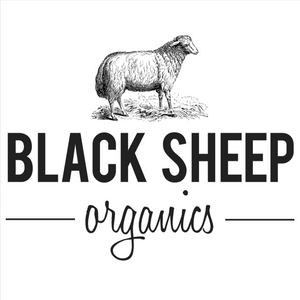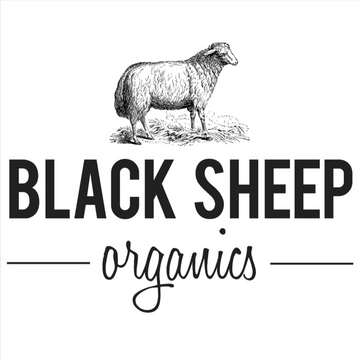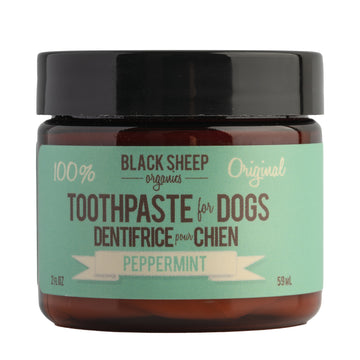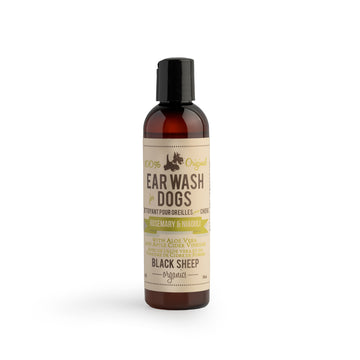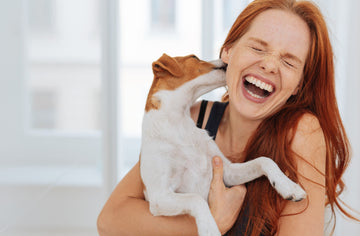The Do's and Don'ts: Can I Use a Human Toothbrush on My Dog?
Dec 15, 2023
Ever wondered if you can use your own toothbrush on your furry friend? While it might seem like a quick and easy solution, we might suggest you not to. In this blog post, we'll delve into the reasons why dogs need special toothbrushes and explore the potential dangers of using an adult human toothbrush on your canine companion. Stay tuned!
Why Is Special Dog Toothbrushes Better for Your Furry Friend?
The answer lies in the unique anatomy of a dog's mouth. Dogs have a longer and more pointed snout compared to adult humans, and their teeth are differently shaped and positioned. The long and big handle of human toothbrush makes it less effective for reaching those hard-to-reach areas in a dog's mouth. And most dog toothbrushes are designed with soft bristles, making it less possible to hurt their teeth or gums. That’s why some baby toothbrushes (with a smaller handle and softer bristles) can be used on your dog. If you do not have a special dog toothbrush at hand, at least use a baby one.
Besides that, plaque and tartar build-up can lead to periodontal disease in dogs, which can cause serious health issues if left untreated. Regular brushing with a dog-specific toothbrush can help prevent these dental problems, ensuring your dog maintains a healthy mouth and a happy life.
A dog-specific toothbrush is designed keeping in mind the shape and size of a dog’s mouth and teeth. These brushes often have smaller handles to navigate the dog's oral cavity better and soft bristles designed to clean along the gum line without hurting it, removing plaque and tartar efficiently.
Here's a quick comparison:
|
Feature |
Adult Human Toothbrush |
Dog Toothbrush |
|
Bristles |
Soft/Medium/Hard |
Softer and designed for a dog's gums |
|
Head |
Small/Medium/Large |
Various sizes to fit a dog's mouth |
Should I Use a Finger Toothbrush for My Dog?
A finger toothbrush is a small, flexible, silicone cap that fits over your fingertip. It has soft bristles on one side, designed to clean a dog's teeth and gums gently. This design gives pet owners more control and can be less intimidating for dogs, especially those new to the tooth brushing experience.
However, like all tools, a finger toothbrush has its pros and cons. Let's take a look:
Pros:
- More control during brushing
- Easier for dogs to accept compared to regular toothbrushes
- Ideal for small dogs or puppies
Cons:
- May not clean as thoroughly as a regular dog toothbrush
- Could be risky if the dog bites down
How to Properly Use a Finger Toothbrush?
- Start by letting your dog sniff and get accustomed to the finger toothbrush.
- Apply a small amount of dog toothpaste onto the brush.
- Gently slide your finger (with the finger toothbrush) into your dog’s mouth and start brushing in a circular motion. Focus on the gum line, where most plaque builds up.
- Be sure to brush all teeth, including the back molars.
The Role of Toothpaste in Dog Dental Care
Dog toothpastes are formulated with pet-safe ingredients and often come in flavors that dogs love. This can make the brushing process more enjoyable for your dog, encouraging them to cooperate during brushing sessions.
On the other hand, human toothpaste can be harmful to dogs. Here's why:
- Fluoride: Most human toothpastes contain fluoride, which is extremely toxic to dogs if ingested.
- Xylitol: This common sweetener in human toothpaste can lead to liver damage and even death in dogs.
- SLS (Sodium Lauryl Sulfate): This foaming agent can cause stomach issues if swallowed by dogs.
Given these risks, it's clear that using human toothpaste on dogs is not safe. Always opt for a toothpaste specially formulated for dogs. These products are designed to be safe for dogs to ingest and can make brushing a more positive experience for your pet.
How Often Should I Brush My Dog's Teeth?
Veterinary experts recommend brushing your dog's teeth daily. This frequency helps prevent plaque buildup, which can harden into tartar if not removed. Tartar is a contributor to periodontal disease, a common but serious dental condition in dogs that can lead to tooth loss and other health complications.
However, we understand that daily brushing might not always be feasible due to various reasons, such as time constraints or your dog's tolerance level. If daily brushing isn't possible, aim for at least three to four times a week. Any amount of brushing is better than none.
Being vigilant about your dog's oral health also means keeping an eye out for signs of periodontal disease. Here are some symptoms to watch for:
- Bad breath
- Yellow or brown buildup on teeth
- Bleeding or inflamed gums
- Loss of appetite or difficulty eating
- Loose or missing teeth
If you notice any of these signs, it's crucial to consult your vet as soon as possible. Regular check-ups can also help catch any potential dental issues early.
FAQs
Q: Can dental problems in dogs lead to other health issues?
Yes, poor dental health can lead to other serious health complications in dogs, including heart, kidney, and liver disease. Regular tooth brushing and dental check-ups can help prevent these issues.
Q: Are dental chews a good substitute for brushing my dog's teeth?
While dental chews can help reduce plaque and freshen breath, they should not replace regular brushing. Brushing is the most effective way to prevent dental disease in dogs.
Q: How can I make my dog more comfortable with teeth brushing?
Start slowly and make the process positive. You can begin by letting your dog taste the toothpaste, then gradually start touching their mouth and teeth with your finger. Over time, you can introduce the toothbrush. Always reward your dog with praise or a small treat after each session.
Q: What age should I start brushing my dog's teeth?
It's a good idea to start brushing your dog's teeth while they're still a puppy, if possible. This can help them get used to the process early on. However, it's never too late to start brushing your dog's teeth.
While using a human toothbrush isn't ideal for your dog due to size and bristle differences, it's crucial to prioritize your pet's dental hygiene. Regular brushing, veterinary check-ups, and a balanced diet can safeguard your furry friend from potential dental issues. Remember, a healthy mouth means a healthier and happier dog overall.
